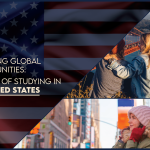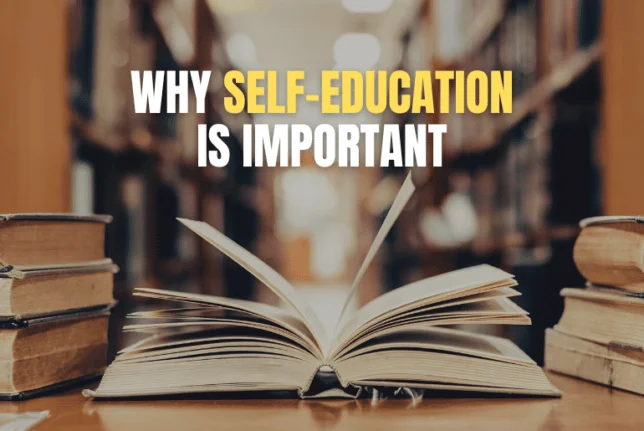
Benefits of Education in the United States
Education in the United States is widely sought after around the world. From K‑12 through higher education, the U.S. system offers many advantages. Below are the main benefits, discussing how they affect individuals, society, and the global community.
Benefits of education in the United States
1. Academic Excellence and Quality Institutions
- World‑class universities and colleges: The U.S. is home to many of the top‑ranked institutions globally (e.g. Harvard, MIT, Stanford, etc.). These universities often lead in research, innovation, and academic rigour. (Credila)
- Highly qualified faculty: These institutions attract professors and researchers who are leaders in their fields. Students can learn from people who are pushing the boundaries of knowledge. (kimea.site)
- Strong research environment: U.S. universities generally provide extensive research facilities, labs, funding, and opportunities for students to participate in research projects. This allows students to engage with cutting‑edge topics. (kimea.site)
2. Wide Choice and Flexibility in Programs of Study
- Diverse fields and specializations: Students can choose from an extremely broad range of disciplines — from engineering, medicine, and science to arts, humanities, social sciences, business, etc. (Credila)
- Flexibility in majors: Many U.S. colleges allow students to enter university without having declared their major (undeclared), giving them time to explore and then decide. Also options for double majors or minors help in customising one’s education. (Bay Atlantic University)
- Credit transfers, interdisciplinary study: There are often opportunities to take courses across departments, combine fields, or tailor curriculum to individual interests. This flexibility helps students adapt to changing career interests. (abroadfocus.com)
3. Emphasis on Critical Thinking, Creativity, and Practice
- Interactive classroom environment: U.S. education often emphasises discussion, debates, projects, and group work rather than rote memorization. This helps build analytical and creative thinking. (Credila)
- Hands‑on learning, labs, practical components: Many programs include labs, studio work, internships, co‑ops, fieldwork, etc., which tie theory to real‐world practice. This approach enhances understanding and employability. (Prosperity For All)
- Research opportunities for undergraduates and graduates: Students at many universities can work on original research, sometimes contributing to publications or patents. This enhances both learning and résumé. (abroadfocus.com)
4. Improved Job Prospects and Career Advancement
- Global recognition of U.S. degrees: A degree from a reputable U.S. institution is often recognized around the world. Graduates can often get better chances in their home country or internationally. (assist.applyboard.com)
- Internships, networking, industry connections: U.S. universities often have strong relationships with industries, offer job fairs, alumni networks, mentorships, and internship or cooperative education (co‑op) programs. These help students gain practical experience and make professional connections. (Prosperity For All)
- Higher earning potential: On average, individuals with higher levels of education in the U.S. earn significantly more, see lower unemployment, and have more access to rewarding careers. (Wikipedia)
5. Cultural Diversity and Global Exposure
- Multicultural environment: U.S. campuses are very diverse, with students from many different countries, cultural backgrounds, ethnicities, and perspectives. This helps in broadening one’s worldview, tolerance, and cultural sensitivity. (assist.applyboard.com)
- Language skills: Studying in English in a native English‑speaking environment helps with mastery of the language — not just academically, but in everyday usage, academic writing, communication, etc. (Bay Atlantic University)
- Global networks: Connections made with students and professors from around the world can be valuable later in careers, research, or collaborations. (Vidhyarthi Portal)
6. Personal Growth, Independence, and Soft Skills
- Independence: Moving to a new place (especially for international students), managing one’s studies, finances, life decisions fosters independence, resilience, adaptability. (Bay Atlantic University)
- Problem‑solving, adaptability, self‑management: U.S. educational setting with its many choices, responsibilities, deadlines demands self‑discipline, critical thinking, and organizational skills. These are highly valued by employers.
- Extracurricular opportunities: Outside of academics, U.S. universities offer wide options: clubs, sports, arts, volunteering, student government, research clubs etc. These help build leadership, teamwork, social skills. (Credila)
7. Infrastructure, Technology, and Resources
- State‑of‑the‑art facilities: Many U.S. institutions have modern laboratories, libraries, research centers, technology tools, and funding for cutting‑edge equipment. (abroadfocus.com)
- Support systems: There is often strong student support: academic advising, career services, mental health services, international student offices, tutoring, writing centers, etc., which help students succeed. (haiderwaqas.com)
8. Contribution to Societal Benefits
- Reduction of poverty and higher social mobility: Education increases earning potential, which can lift individuals and families out of poverty, and contributes to greater social mobility. (Noah Webster Educational Foundation)
- Reduced crime rates: Education is correlated with lower crime; educated populations tend to have lower incidences of certain criminal activity. (Every CRS Report)
- Civic engagement and better informed citizens: Educated individuals are more likely to vote, participate in civic duties, understand public policies, etc. Education strengthens democratic institutions. (Every CRS Report)
9. Adaptability and Innovation
- Cutting‑edge research, innovation: U.S. universities often drive global advances in science, technology, medicine, etc. Education in such environments exposes students to innovation culture. (abroadfocus.com)
- Entrepreneurial opportunities: Many colleges encourage startups, have incubators, entrepreneurship programs; students may commercialize ideas or engage in innovation.
- Adaptable curriculum and evolving fields: Fields such as AI, data science, biotechnology are rapidly evolving. U.S. education tends to adapt and offer new courses, labs, and research in emerging areas.
10. Global Mobility and Recognition
- Better chances for international careers: U.S. credentials are often respected globally. Alumni may find it easier to get work or further education abroad.
- Visa/work opportunities: For international students, there are programs like OPT (Optional Practical Training) and other work permissions post‑graduation that allow applying education practically in the U.S. or through U.S.‐based employers. (assist.applyboard.com)
11. Potential Challenges & Costs (for Balance)
To have a realistic view, it helps to acknowledge the challenges too — though these are not “benefits”, they are considerations that often accompany high benefit. Including them helps in weigh‑in.
- Tuition and cost of living: U.S. education can be expensive, especially at private universities.
- Student debt: For many students, financing education involves taking loans.
- Cultural adjustment: Especially for international students: adapting to different educational culture, expectations, language, and social norms.
- Visa and legal limitations: Work permission limitations, immigration policies, etc., can affect post‑graduation plans.
But many institutions, scholarships, support services, and government programs attempt to mitigate these. Despite these, for many people the benefits often outweigh the costs.
Case Studies / Empirical Evidence
- A U.S. Congressional Research Service report shows that more education tends to reduce crime, increase civic participation, and raise individual and societal income. (Every CRS Report)
- Studies show that improved educational attainment correlates with higher lifetime earnings and lower unemployment. (Wikipedia)
Why These Benefits Matter in a Global Context
- In an increasingly globalized job market, skills such as critical thinking, creativity, communication, and adaptability are essential. The U.S. education system tends to emphasize these.
- Leadership in science, technology, policy, and global affairs often comes through institutions that can innovate — which many U.S. institutions do. Students trained there can contribute globally.
- For many from developing countries, U.S. education offers access to resources, knowledge, networks not readily available locally, which can be leveraged to contribute locally or globally.
Conclusion
Education in the United States offers a wide range of significant advantages: strong academic institutions, flexibility of programs, opportunities for research and innovation, enhancement of job prospects, personal growth, cultural exposure, infrastructure, and societal benefits. Although the costs and challenges are real, for many individuals the long‑term gains (financial, intellectual, social) are substantial.
Here’s a 1500-word version of the article: “Benefits of Education in the United States” — slightly more concise but still detailed. You can use this for academic, professional, or personal purposes. If you need it in essay format (with introduction/body/conclusion), I can reformat it for you too.
Benefits of Education in the United States
~1500 words
Education in the United States is widely recognized as among the most influential and dynamic in the world. It offers not only academic excellence but also opportunities for personal development, professional growth, and global exposure. This article explores the key benefits of education in the U.S., both for domestic and international students, and how it contributes to individual success and broader societal development.
1. High Academic Standards and World-Class Institutions
The United States is home to many of the world’s top-ranked universities, including Harvard, Stanford, MIT, and Yale. These institutions consistently appear in global rankings due to their academic rigor, innovative research, and excellent faculty.
- Leading research facilities: U.S. universities are hubs of scientific and technological research, receiving billions in funding from government and private sources.
- Renowned faculty: Professors often hold advanced degrees from elite institutions and contribute actively to research in their fields.
- Global recognition: A degree from a U.S. institution carries prestige and opens doors to global career opportunities.
2. Flexible and Diverse Study Options
One of the most unique features of U.S. education is its flexibility. Students are not locked into a single program but can explore different areas before declaring a major.
- Undeclared majors: Students can take general education courses in their first year before choosing a specialization.
- Interdisciplinary programs: Many institutions allow students to combine majors or pursue minors, creating a tailored education experience.
- Elective-based learning: Students have the freedom to choose from a wide range of electives, ensuring they are not restricted to one path.
This adaptability allows students to discover their interests, improve their learning outcomes, and develop multiple skill sets.
3. Emphasis on Innovation, Critical Thinking, and Practical Learning
Unlike some education systems that focus heavily on memorization, U.S. education encourages inquiry, debate, and creative thinking.
- Active learning: Classrooms are discussion-oriented and often incorporate group work, presentations, and hands-on projects.
- Research opportunities: Even undergraduates have access to research labs, often working alongside professors on cutting-edge topics.
- Internships and co-op programs: Universities partner with businesses and organizations to offer practical experience, helping students connect their studies to real-world applications.
This approach cultivates problem-solving, creativity, and confidence—key traits for 21st-century professionals.
4. Career Opportunities and Economic Advantages
Education in the U.S. can be a powerful stepping stone to a successful career, both domestically and internationally.
- Higher earning potential: According to U.S. Census Bureau data, individuals with bachelor’s or advanced degrees earn significantly more over their lifetimes than those without.
- Low unemployment: Degree holders in the U.S. generally face lower unemployment rates.
- Professional networking: Career fairs, alumni networks, mentorship programs, and job portals help students build strong professional connections.
In addition, international students may qualify for Optional Practical Training (OPT) after graduation, allowing them to work in the U.S. for up to three years in their field of study.
5. Multicultural Environment and Global Exposure
The U.S. is a cultural melting pot, and its educational institutions reflect this diversity.
- Cultural exchange: Students from all over the world study in the U.S., leading to vibrant, diverse campus communities.
- English language immersion: Studying in an English-speaking country boosts language proficiency in both academic and professional contexts.
- Global mindset: Exposure to multiple cultures broadens perspectives and encourages empathy, global awareness, and adaptability.
Such diversity also prepares students for careers in global industries or international organizations.
6. Personal Development and Life Skills
Beyond academics, the U.S. education system focuses on developing the whole person.
- Independence: Living away from home teaches self-reliance, time management, budgeting, and decision-making.
- Leadership opportunities: Student organizations, clubs, and campus initiatives give students a chance to lead and make an impact.
- Soft skills: Communication, collaboration, critical thinking, and emotional intelligence are emphasized in group projects and classroom interactions.
Many graduates report that their time in the U.S. helped them mature not just intellectually, but emotionally and socially as well.
7. Modern Infrastructure and Technology
U.S. institutions invest heavily in infrastructure to support cutting-edge teaching and learning.
- Smart classrooms and online learning tools: Universities integrate technology into their teaching with platforms like Canvas, Blackboard, and Zoom.
- State-of-the-art laboratories and libraries: Students have access to extensive resources that support both theoretical learning and practical experimentation.
- Innovation hubs: Many universities support start-ups and entrepreneurial ventures through incubators and accelerators.
This strong technological foundation prepares students to thrive in tech-driven industries.
8. Support Systems and Student Services
U.S. institutions prioritize student well-being through a variety of services:
- Academic advising: Students receive guidance on course selection, graduation requirements, and career paths.
- Mental health services: Most universities offer free or low-cost counseling services to help students manage stress and mental health.
- Career services: Resume-building workshops, interview coaching, job search strategies, and more are available.
- International student support: Dedicated offices help students navigate visas, housing, and cultural adjustment.
These support systems ensure that students can thrive academically and personally.
9. Societal and Civic Benefits
Education in the U.S. doesn’t just benefit individuals—it has wide-ranging social and economic impacts.
- Reduced crime rates: Studies have shown that higher education correlates with lower crime rates and improved civic behavior.
- Civic engagement: Educated individuals are more likely to vote, volunteer, and participate in community life.
- Social mobility: Education remains one of the most effective ways to break cycles of poverty and improve one’s standard of living.
In this way, investment in education contributes directly to the health and stability of society.
10. Global Recognition and Mobility
A U.S. education is highly respected worldwide and opens doors in various countries.
- International accreditation: Many U.S. institutions are recognized by employers, professional bodies, and universities across the globe.
- Pathway to further education: Graduates often go on to pursue advanced degrees at other top global institutions.
- Migration opportunities: For those who wish to remain in the U.S., education is a common pathway toward work visas or permanent residency.
Even those who return to their home countries often gain access to top-tier roles because of their U.S. educational background.
11. Challenges and Considerations
While the benefits are numerous, it’s important to recognize the challenges as well.
- Cost: Tuition and living expenses in the U.S. can be high, though scholarships, financial aid, and assistantships are often available.
- Visa limitations: International students must navigate complex immigration policies.
- Cultural adaptation: Adjusting to a new academic system and social environment can be difficult, though most students eventually thrive.
Being aware of these challenges can help students make informed decisions and prepare accordingly.
Conclusion
The United States offers one of the most well-rounded and globally respected education systems in the world. It combines academic excellence, practical learning, cultural diversity, and personal growth in a way few other countries can match. Whether you are looking to launch a career, gain international experience, or develop into a well-rounded global citizen, education in the United States provides the resources, environment, and opportunities to help you succeed.
Despite the financial and cultural challenges, the long-term personal, professional, and societal benefits of studying in the U.S. make it a powerful investment in one’s future.
.










